#george muchado
Text
(Mostly) Lost, but Not Forgotten: Omar Khayyam (1923) / A Lover’s Oath (1925)

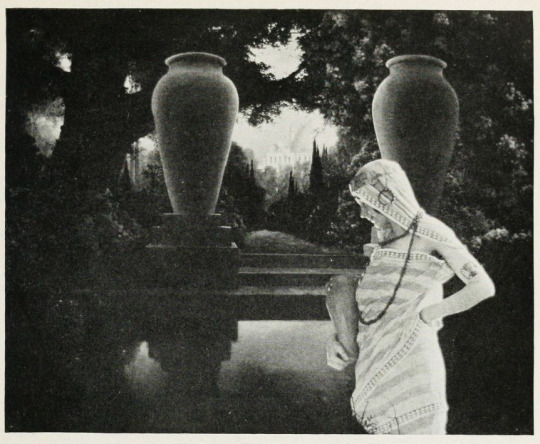


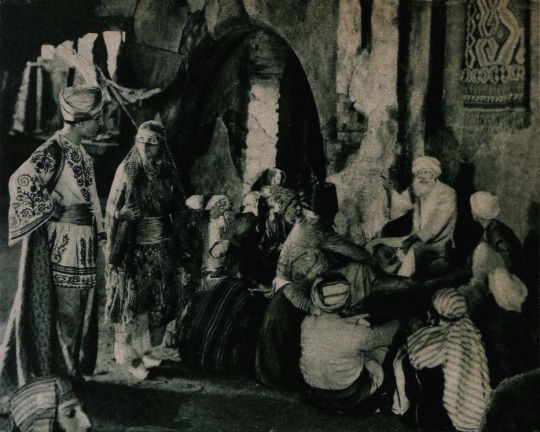
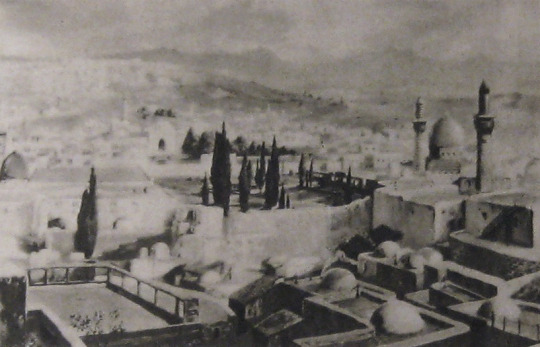

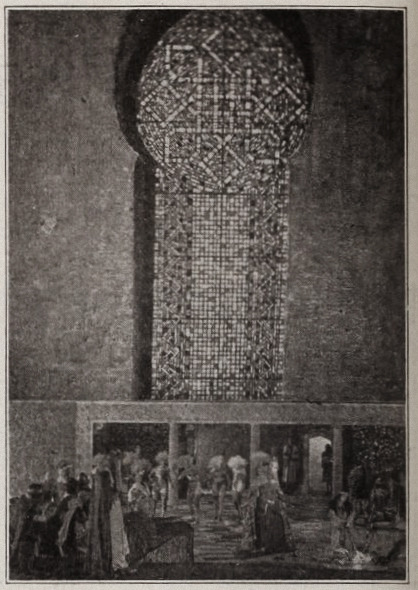
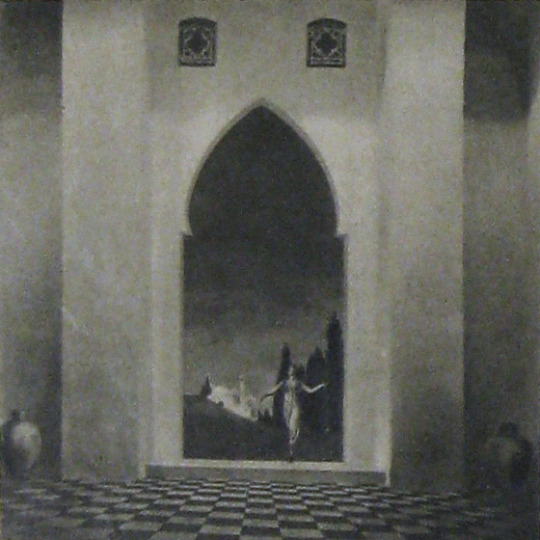



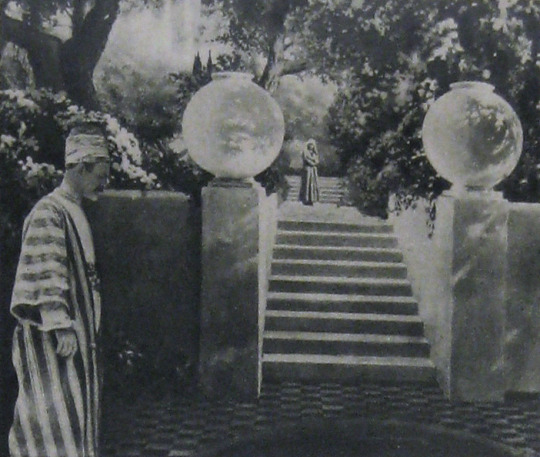
Alternate Titles: The Rubaiyat of Omar Khayyam, The Rubaiyat, Omar Khayyam, Omar
Direction: Ferdinand Pinney Earle; assisted by Walter Mayo
Scenario: Ferdinand P. Earle
Titles: Marion Ainslee, Ferdinand P. Earle (Omar), Louis Weadock (A Lover’s Oath)
Inspired by: The Rubaiyat of Omar Khayyam, as edited & translated by Edward FitzGerald
Production Manager: Winthrop Kelly
Camera: Georges Benoit
Still Photography: Edward S. Curtis
Special Photographic Effects: Ferdinand P. Earle, Gordon Bishop Pollock
Composer: Charles Wakefield Cadman
Editors: Arthur D. Ripley (The Rubaiyat of Omar Khayyam version), Ethel Davey & Ferdinand P. Earle (Omar / Omar Khayyam, the Director’s cut of 1922), Milton Sills (A Lover’s Oath)
Scenic Artists: Frank E. Berier, Xavier Muchado, Anthony Vecchio, Paul Detlefsen, Flora Smith, Jean Little Cyr, Robert Sterner, Ralph Willis
Character Designer: Louis Hels
Choreography: Ramon Novarro (credited as Ramon Samaniegos)
Technical Advisors: Prince Raphael Emmanuel, Reverend Allan Moore, Captain Dudley S. Corlette, & Captain Montlock or Mortlock
Studio: Ferdinand P. Earle Productions / The Rubaiyat, Inc. (Production) & Eastern Film Corporation (Distribution, Omar), Astor Distribution Corporation [States Rights market] (Distribution, A Lover’s Oath)
Performers: Frederick Warde, Edwin Stevens, Hedwiga Reicher, Mariska Aldrich, Paul Weigel, Robert Anderson, Arthur Carewe, Jesse Weldon, Snitz Edwards, Warren Rogers, Ramon Novarro (originally credited as Ramon Samaniegos), Big Jim Marcus, Kathleen Key, Charles A. Post, Phillippe de Lacy, Ferdinand Pinney Earle
Premiere(s): Omar cut: April 1922 The Ambassador Theatre, New York, NY (Preview Screening), 12 October 1923, Loew’s New York, New York, NY (Preview Screening), 2 February 1923, Hoyt’s Theatre, Sydney, Australia (Initial Release)
Status: Presumed lost, save for one 30 second fragment preserved by the Academy Film Archive, and a 2.5 minute fragment preserved by a private collector (Old Films & Stuff)
Length: Omar Khayyam: 8 reels , 76 minutes; A Lover’s Oath: 6 reels, 5,845 feet (though once listed with a runtime of 76 minutes, which doesn’t line up with the stated length of this cut)
Synopsis (synthesized from magazine summaries of the plot):
Omar Khayyam:
Set in 12th century Persia, the story begins with a preface in the youth of Omar Khayyam (Warde). Omar and his friends, Nizam (Weigel) and Hassan (Stevens), make a pact that whichever one of them becomes a success in life first will help out the others. In adulthood, Nizam has become a potentate and has given Omar a position so that he may continue his studies in mathematics and astronomy. Hassan, however, has grown into quite the villain. When he is expelled from the kingdom, he plots to kidnap Shireen (Key), the sheik’s daughter. Shireen is in love with Ali (Novarro). In the end it’s Hassan’s wife (Reicher) who slays the villain then kills herself.
A Lover’s Oath:
The daughter of a sheik, Shireen (Key), is in love with Ali (Novarro), the son of the ruler of a neighboring kingdom. Hassan covets Shireen and plots to kidnap her. Hassan is foiled by his wife. [The Sills’ edit places Ali and Shireen as protagonists, but there was little to no re-shooting done (absolutely none with Key or Novarro). So, most critics note how odd it is that all Ali does in the film is pitch woo, and does not save Shireen himself. This obviously wouldn’t have been an issue in the earlier cut, where Ali is a supporting character, often not even named in summaries and news items. Additional note: Post’s credit changes from “Vizier” to “Commander of the Faithful”]
Additional sequence(s) featured in the film (but I’m not sure where they fit in the continuity):
Celestial sequences featuring stars and planets moving through the cosmos
Angels spinning in a cyclone up to the heavens
A Potters’ shop sequence (relevant to a specific section of the poems)
Harem dance sequence choreographed by Novarro
Locations: palace gardens, street and marketplace scenes, ancient ruins


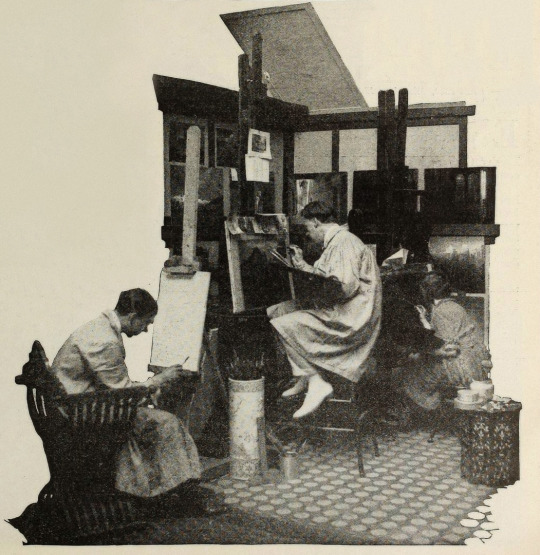


Points of Interest:
“The screen has been described as the last word in realism, but why confine it there? It can also be the last word in imaginative expression.”
Ferdinand P. Earle as quoted in Exhibitors Trade Review, 4 March 1922
The Rubaiyat of Omar Khayyam was a massive best seller. Ferdinand Pinney Earle was a classically trained artist who studied under William-Adolphe Bougueraeu and James McNeill Whistler in his youth. He also had years of experience creating art backgrounds, matte paintings, and art titles for films. Charles Wakefield Cadman was an accomplished composer of songs, operas, and operettas. Georges Benoit and Gordon Pollock were experienced photographic technicians. Edward S. Curtis was a widely renowned still photographer. Ramon Novarro was a name nobody knew yet—but they would soon enough.
When Earle chose The Rubaiyat as the source material for his directorial debut and collected such skilled collaborators, it seemed likely that the resulting film would be a landmark in the art of American cinema. Quite a few people who saw Earle’s Rubaiyat truly thought it would be:
William E. Wing writing for Camera, 9 September 1922, wrote:
“Mr. Earle…came from the world of brush and canvass, to spread his art upon the greater screen. He created a new Rubaiyat with such spiritual colors, that they swayed.”
…
“It has been my fortune to see some of the most wonderful sets that this Old Earth possesses, but I may truly say that none seized me more suddenly, or broke with greater, sudden inspiration upon the view and the brain, than some of Ferdinand Earle’s backgrounds, in his Rubaiyat.
“His vision and inspired art seem to promise something bigger and better for the future screen.”
As quoted in an ad in Film Year Book, 1923:
“Ferdinand Earle has set a new standard of production to live up to.”
Rex Ingram
“Fifty years ahead of the time.”
Marshall Neilan
The film was also listed among Fritz Lang’s Siegfried, Chaplin’s Gold Rush, Fairbanks’ Don Q, Lon Chaney’s Phantom of the Opera and The Unholy Three, and Erich Von Stroheim’s Merry Widow by the National Board of Review as an exceptional film of 1925.
So why don’t we all know about this film? (Spoiler: it’s not just because it’s lost!)
The short answer is that multiple dubious legal challenges arose that prevented Omar’s general release in the US. The long answer follows BELOW THE JUMP!
Earle began the project in earnest in 1919. Committing The Rubaiyat to film was an ambitious undertaking for a first-time director and Earle was striking out at a time when the American film industry was developing an inferiority complex about the level of artistry in their creative output. Earle was one of a number of artists in the film colony who were going independent of the emergent studio system for greater protections of their creative freedoms.
In their adaptation of The Rubaiyat of Omar Khayyam, Earle and Co. hoped to develop new and perfect existing techniques for incorporating live-action performers with paintings and expand the idea of what could be accomplished with photographic effects in filmmaking. The Rubaiyat was an inspired choice. It’s not a narrative, but a collection of poetry. This gave Earle the opportunity to intersperse fantastical, poetic sequences throughout a story set in the lifetime of Omar Khayyam, the credited writer of the poems. In addition to the fantastic, Earle’s team would recreate 12th century Persia for the screen.
Earle was convinced that if his methods were perfected, it wouldn’t matter when or where a scene was set, it would not just be possible but practical to put on film. For The Rubaiyat, the majority of shooting was done against black velvet and various matte photography and multiple exposure techniques were employed to bring a setting 800+ years in the past and 1000s of miles removed to life before a camera in a cottage in Los Angeles.
Note: If you’d like to learn a bit more about how these effects were executed at the time, see the first installment of How’d They Do That.
Unfortunately, the few surviving minutes don’t feature much of this special photography, but what does survive looks exquisite:

see all gifs here
Earle, knowing that traditional stills could not be taken while filming, brought in Edward S. Curtis. Curtis developed techniques in still photography to replicate the look of the photographic effects used for the film. So, even though the film hasn’t survived, we have some pretty great looking representations of some of the 1000s of missing feet of the film.
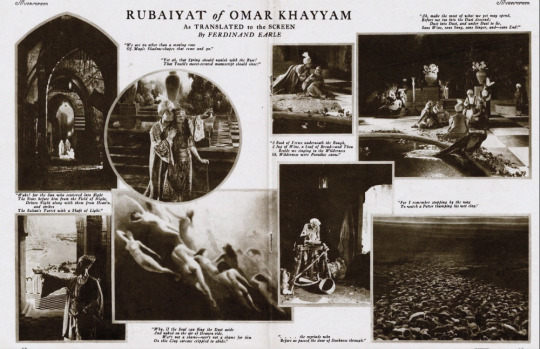
Nearly a year before Curtis joined the crew, Earle began collaboration with composer Charles Wakefield Cadman. In another bold creative move, Cadman and Earle worked closely before principal photography began so that the score could inform the construction and rhythm of the film and vice versa.
By the end of 1921 the film was complete. After roughly 9 months and the creation of over 500 paintings, The Rubaiyat was almost ready to meet its public. However, the investors in The Rubaiyat, Inc., the corporation formed by Earle to produce the film, objected to the ample reference to wine drinking (a comical objection if you’ve read the poems) and wanted the roles of the young lovers (played by as yet unknown Ramon Novarro and Kathleen Key) to be expanded. The dispute with Earle became so heated that the financiers absconded with the bulk of the film to New York. Earle filed suit against them in December to prevent them from screening their butchered and incomplete cut. Cadman supported Earle by withholding the use of his score for the film.
Later, Eastern Film Corp. brokered a settlement between the two parties, where Earle would get final cut of the film and Eastern would handle its release. Earle and Eastern agreed to change the title from The Rubaiyat of Omar Khayyam to simply Omar. Omar had its first official preview in New York City. It was tentatively announced that the film would have a wide release in the autumn.
However, before that autumn, director Norman Dawn launched a dubious patent-infringement suit against Earle and others. Dawn claimed that he owned the sole right to use multiple exposures, glass painting for single exposure, and other techniques that involved combining live action with paintings. All the cited techniques had been widespread in the film industry for a decade already and eventually and expectedly Dawn lost the suit. Despite Earle’s victory, the suit effectively put the kibosh on Omar’s release in the US.
Earle moved on to other projects that didn’t come to fruition, like a Theda Bara film and a frankly amazing sounding collaboration with Cadman to craft a silent-film opera of Faust. Omar did finally get a release, albeit only in Australia. Australian news outlets praised the film as highly as those few lucky attendees of the American preview screenings did. The narrative was described as not especially original, but that it was good enough in view of the film’s artistry and its imaginative “visual phenomena” and the precision of its technical achievement.
One reviewer for The Register, Adelaide, SA, wrote:
“It seems almost an impossibility to make a connected story out of the short verse of the Persian of old, yet the producer of this classic of the screen… has succeeded in providing an entertainment that would scarcely have been considered possible. From first to last the story grips with its very dramatic intensity.”
While Omar’s American release was still in limbo, “Ramon Samaniegos” made a huge impression in Rex Ingram’s Prisoner of Zenda (1922, extant) and Scaramouche (1923, extant) and took on a new name: Ramon Novarro. Excitement was mounting for Novarro’s next big role as the lead in the epic Ben-Hur (1925, extant) and the Omar project was re-vivified.

A new company, Astor Distribution Corp., was formed and purchased the distribution rights to Omar. Astor hired actor (note, not an editor) Milton Sills to re-cut the film to make Novarro and Key more prominent. The company also re-wrote the intertitles, reduced the films runtime by more than ten minutes, and renamed the film A Lover’s Oath. Earle had moved on by this point, vowing to never direct again. In fact, Earle was indirectly working with Novarro and Key again at the time, as an art director on Ben-Hur!
Despite Omar’s seemingly auspicious start in 1920, it was only released in the US on the states rights market as a cash-in on the success of one of its actors in a re-cut form five years later.
That said, A Lover’s Oath still received some good reviews from those who did manage to see it. Most of the negative criticism went to the story, intertitles, and Sills’ editing.
What kind of legacy could/should Omar have had? I’m obviously limited in my speculation by the fact that the film is lost, but there are a few key facts about the film’s production, release, and timing to consider.
The production budget was stated to be $174,735. That is equivalent to $3,246,994.83 in 2024 dollars. That is a lot of money, but since the production was years long and Omar was a period film set in a remote locale and features fantastical special effects sequences, it’s a modest budget. For contemporary perspective, Robin Hood (1922, extant) cost just under a million dollars to produce and Thief of Bagdad (1924, extant) cost over a million. For a film similarly steeped in spectacle to have nearly 1/10th of the budget is really very noteworthy. And, perhaps if the film had ever had a proper release in the US—in Earle’s intended form (that is to say, not the Sills cut)—Omar may have made as big of a splash as other epics.
It’s worth noting here however that there are a number of instances in contemporary trade and fan magazines where journalists off-handedly make this filmmaking experiment about undermining union workers. Essentially implying that that value of Earle’s method would be to continue production when unionized workers were striking. I’m sure that that would absolutely be a primary thought for studio heads, but it certainly wasn’t Earle’s motivation. Often when Earle talks about the method, he focuses on being able to film things that were previously impossible or impracticable to film. Driving down filming costs from Earle’s perspective was more about highlighting the artistry of his own specialty in lieu of other, more demanding and time-consuming approaches, like location shooting.
This divide between artists and studio decision makers is still at issue in the American film and television industry. Studio heads with billion dollar salaries constantly try to subvert unions of skilled professionals by pursuing (as yet) non-unionized labor. The technical developments of the past century have made Earle’s approach easier to implement. However, just because you don’t have to do quite as much math, or time an actor’s movements to a metronome, does not mean that filming a combination of painted/animated and live-action elements does not involve skilled labor.
VFX artists and animators are underappreciated and underpaid. In every new movie or TV show you watch there’s scads of VFX work done even in films/shows that have mundane, realistic settings. So, if you love a film or TV show, take the effort to appreciate the work of the humans who made it, even if their work was so good you didn’t notice it was done. And, if you’ve somehow read this far, and are so out of the loop about modern filmmaking, Disney’s “live-action” remakes are animated films, but they’ve just finagled ways to circumvent unions and low-key delegitimize the skilled labor of VFX artists and animators in the eyes of the viewing public. Don’t fall for it.
VFX workers in North America have a union under IATSE, but it’s still developing as a union and Marvel & Disney workers only voted to unionize in the autumn of 2023. The Animation Guild (TAG), also under the IATSE umbrella, has a longer history, but it’s been growing rapidly in the past year. A strike might be upcoming this year for TAG, so keep an eye out and remember to support striking workers and don’t cross picket lines, be they physical or digital!
Speaking of artistry over cost-cutting, I began this post with a mention that in the early 1920s, the American film industry was developing an inferiority complex in regard to its own artistry. This was in comparison to the European industries, Germany’s being the largest at the time. It’s frustrating to look back at this period and see acceptance of the opinion that American filmmakers weren’t bringing art to film. While yes, the emergent studio system was highly capitalistic and commercial, that does not mean the American industry was devoid of home-grown artists.
United Artists was formed in 1919 by Douglas Fairbanks, Charlie Chaplin, Mary Pickford, and D.W. Griffith precisely because studios were holding them back from investing in their art—within the same year that Earle began his Omar project. While salaries and unforgiving production schedules were also paramount concerns in the filmmakers going independent, a primary impetus was that production/distribution heads exhibited too much control over what the artists were trying to create.
Fairbanks was quickly expanding his repertoire in a more classical and fantastic direction. Cecil B. DeMille made his first in a long and very successful string of ancient epics. And the foreign-born children of the American film industry, Charlie Chaplin, Rex Ingram, and Nazimova, were poppin’ off! Chaplin was redefining comedic filmmaking. Ingram was redefining epics. Nazimova independently produced what is often regarded as America’s first art film, Salome (1923, extant), a film designed by Natacha Rambova, who was *gasp* American. Earle and his brother, William, had ambitious artistic visions of what could be done in the American industry and they also had to self-produce to get their work done.
Meanwhile, studio heads, instead of investing in the artists they already had contracts with, tried to poach talent from Europe with mixed success (in this period, see: Ernst Lubitsch, F.W. Murnau, Benjamin Christensen, Mauritz Stiller, Victor Sjöström, and so on). I’m in no way saying it was the wrong call to sign these artists, but all of these filmmakers, even if they found success in America, had stories of being hired to inject the style and artistry that they developed in Europe into American cinema, and then had their plans shot down or cut down to a shadow of their creative vision. Even Stiller, who tragically died before he had the opportunity to establish himself in the US, faced this on his first American film, The Temptress (1926, extant), on which he was replaced. Essentially, the studio heads’ actions were all hot air and spite for the filmmakers who’d gone independent.

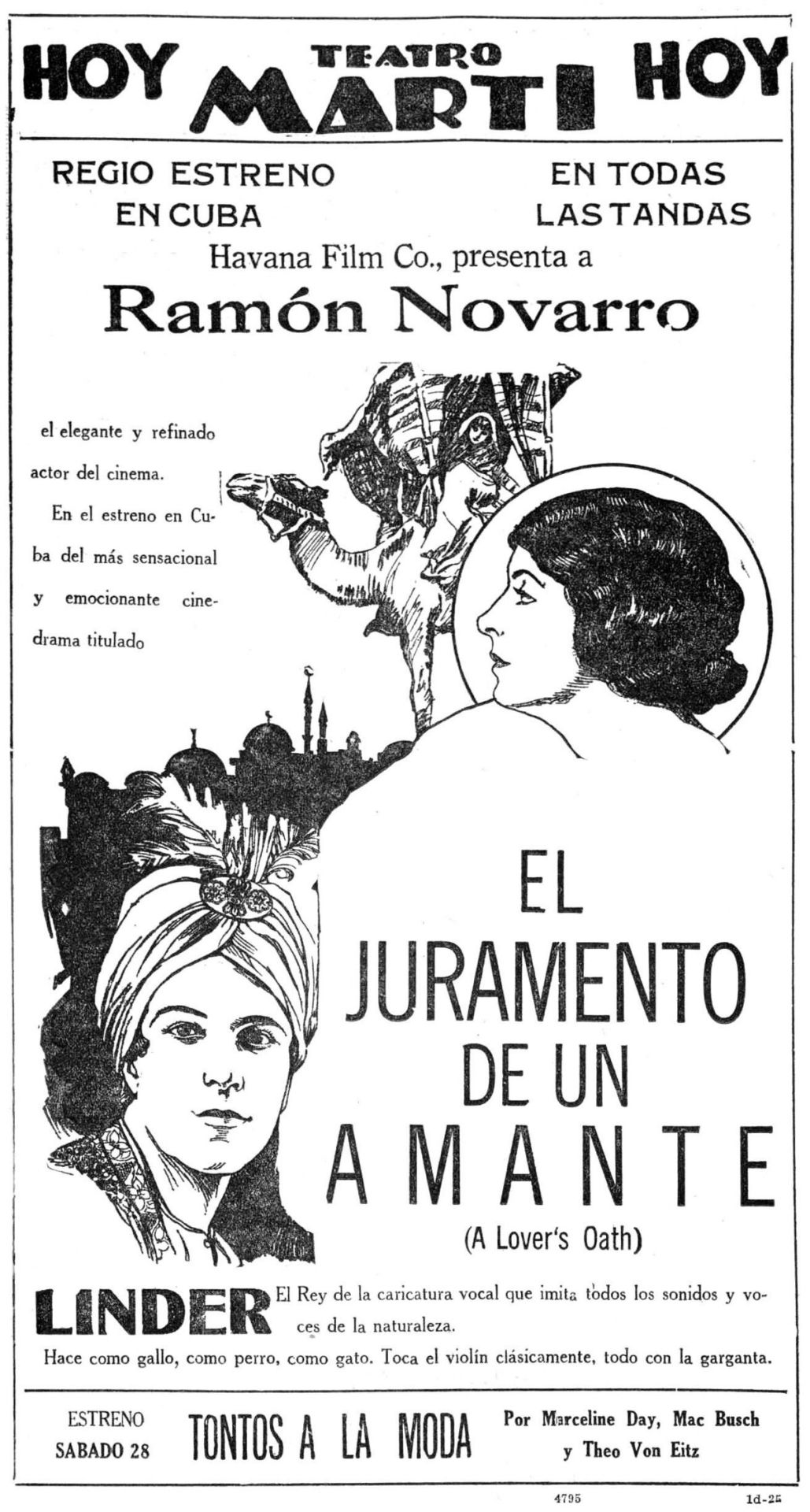
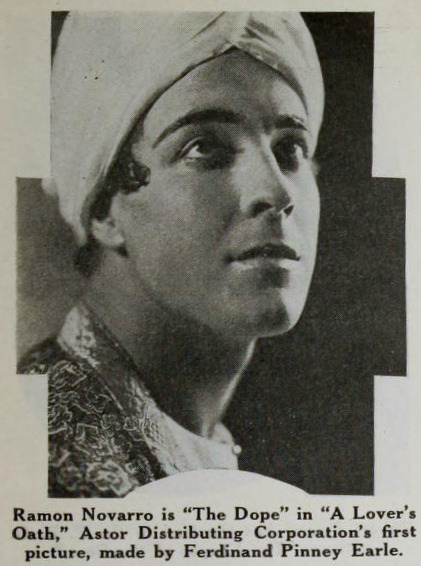
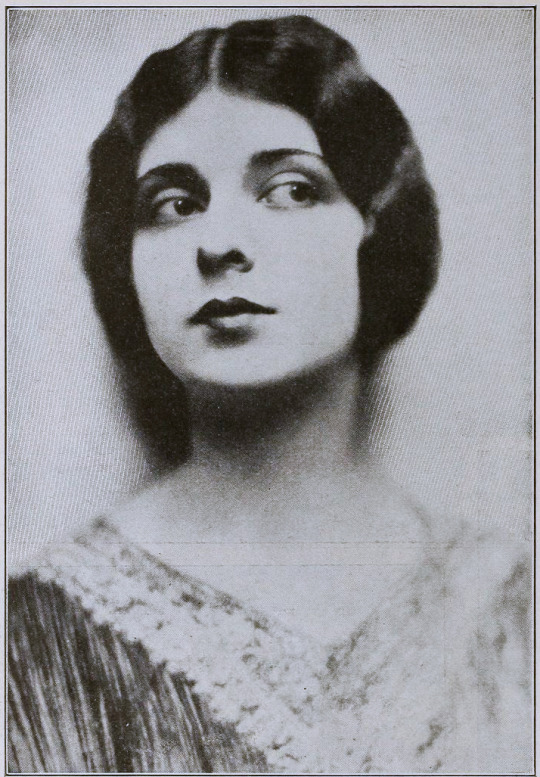
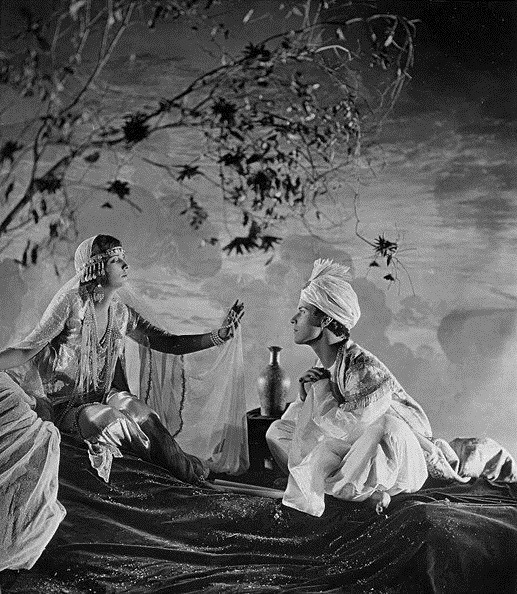
Finally I would like to highlight Ferdinand Earle’s statement to the industry, which he penned for from Camera in 14 January 1922, when his financial backers kidnapped his film to re-edit it on their terms:
MAGNA CHARTA
Until screen authors and producers obtain a charter specifying and guaranteeing their privileges and rights, the great slaughter of unprotected motion picture dramas will go merrily on.
Some of us who are half artists and half fighters and who are ready to expend ninety per cent of our energy in order to win the freedom to devote the remaining ten per cent to creative work on the screen, manage to bring to birth a piteous, half-starved art progeny.
The creative artist today labors without the stimulus of a public eager for his product, labors without the artistic momentum that fires the artist’s imagination and spurs his efforts as in any great art era.
Nowadays the taint of commercialism infects the seven arts, and the art pioneer meets with constant petty worries and handicaps.
Only once in a blue moon, in this matter-of-fact, dollar-wise age can the believer in better pictures hope to participate in a truely [sic] artistic treat.
In the seven years I have devoted to the screen, I have witnessed many splendid photodramas ruined by intruding upstarts and stubborn imbeciles. And I determined not to launch the production of my Opus No. 1 until I had adequately protected myself against all the usual evils of the way, especially as I was to make an entirely new type of picture.
In order that my film verison [sic] of the Rubaiyat of Omar Khayyam might be produced under ideal conditions and safeguarded from intolerable interferences and outside worries, I entered into a contract with the Rubaiyat, Inc., that made me not only president of the corporation and on the board of directors, but which set forth that I was to be author, production manager, director, cutter and film editor as well as art director, and that no charge could be made against the production without my written consent, and that my word was to be final on all matters of production. The late George Loane Tucker helped my attorney word the contract, which read like a splendid document.
Alas, I am now told that only by keeping title to a production until it is declared by yourself to be completed is it safe for a scenario writer, an actor or a director, who is supposedly making his own productions, to contract with a corporation; otherwise he is merely the servant of that corporation, subject at any moment to discharge, with the dubious redress of a suit for damages that can with difficulty be estimated and proven.
Can there be any hope of better pictures as long as contracts and copyrights are no protection against financial brigands and bullies?
We have scarcely emerged from barbarism, for contracts, solemnly drawn up between human beings, in which the purposes are set forth in the King’s plainest English, serve only as hurdles over which justice-mocking financiers and their nimble attorneys travel with impunity, riding rough shod over the author or artist who cannot support a legal army to defend his rights. The phrase is passed about that no contract is invioliable [sic]—and yet we think we have reached a state of civilization!
The suit begun by my attorneys in the federal courts to prevent the present hashed and incomplete version of my story from being released and exhibited, may be of interest to screen writers. For the whole struggle revolves not in the slightest degree around the sanctity of the contract, but centers around the federal copyright of my story which I never transferred in writing otherwise, and which is being brazenly ignored.
Imagine my production without pictorial titles: and imagine “The Rubaiyat” with a spoken title as follows, “That bird is getting to talk too much!”—beside some of the immortal quatrains of Fitzgerald!
One weapon, fortunately, remains for the militant art creator, when all is gone save his dignity and his sense of humor; and that is the rapier blade of ridicule, that can send lumbering to his retreat the most brutal and elephant-hided lord of finance.
How edifying—the tableau of the man of millions playing legal pranks upon men such as Charles Wakefield Cadman, Edward S. Curtis and myself and others who were associated in the bloody venture of picturizing the Rubaiyat! It has been gratifying to find the press of the whole country ready to champion the artist’s cause.
When the artist forges his plowshare into a sword, so to speak, he does not always put up a mean fight.
What publisher would dare to rewrite a sonnet of John Keats or alter one chord of a Chopin ballade?
Creative art of a high order will become possible on the screen only when the rights of established, independent screen producers, such as Rex Ingram and Maurice Tourneur, are no longer interferred with and their work no longer mutilated or changed or added to by vandal hands. And art dramas, conceived and executed by masters of screen craft, cannot be turned out like sausages made by factory hands. A flavor of individuality and distinction of style cannot be preserved in machine-made melodramas—a drama that is passed from hand to hand and concocted by patchworkers and tinkerers.
A thousand times no! For it will always be cousin to the sausage, and be like all other—sausages.
The scenes of a master’s drama may have a subtle pictorial continuity and a power of suggestion quite like a melody that is lost when just one note is changed. And the public is the only test of what is eternally true or false. What right have two or three people to deprive millions of art lovers of enjoying an artist’s creation as it emerged from his workshop?
“The Rubaiyat” was my first picture and produced in spite of continual and infernal interferences. It has taught me several sad lessons, which I have endeavored in the above paragraphs to pass on to some of my fellow sufferers. It is the hope that I am fighting, to a certain extent, their battle that has given me the courage to continue, and that has prompted me to write this article. May such hubbubs eventually teach or inforce a decent regard for the rights of authors and directors and tend to make the existence of screen artisans more secure and soothing to the nerves.
FERDINAND EARLE.
---
☕Appreciate my work? Buy me a coffee! ☕
Transcribed Sources & Annotations over on the WMM Blog!
See the Timeline for Ferdinand P. Earle's Rubaiyat Adaptation
#1920s#1923#1925#omar khayyam#ferdinand pinney earle#ramon novarro#independent film#american film#silent cinema#silent era#silent film#classic cinema#classic movies#classic film#film history#history#Charles Wakefield Cadman#cinematography#The Rubaiyat#cinema#film#lost film
41 notes
·
View notes
Note
I would also go insane over a trc show but also kinda hope one never gets made bc I know how picky I am abt adaptations of books I love
HOWEVER, every time I watch reservation dogs I think abt how good Paulina alexis would be as blue, and every time I watch his dark materials I think abt how good amir Wilson would be as Adam, then I spend the next half hour imagining how I would adapt trc for tv
Anyway, I know fan casting teen characters is hard bc it gives you a very narrow age range of actors to choose from, but do you have any actors you think would be really good as a trc character? Even actors who have aged out of the roles now but would have been good when they were younger (for me it's Robert Sean Leonard as Gansey)
okay I delayed answering this until I had a cast in my head but omg yes Amir Wilson as Adam is perfect!! My fancast for the rest would be:
young Keke Palmer as Blue
young George Mackay as Gansey
young Archie Renaux as Ronan Lynch
Noah Schnapp as Noah Czerny (sorry to type cast him here but he would be so good)
Aja Naomi King as Maura
Lisa Bonnet as Neeve
Justina Muchado as Calla
Yara Shahidi as Orla
Danielle Brooks as Jimi
Eva Green as Persephone (to fill the Penny Dreadful Vanessa Ives shaped whole in my heart)
Young Alden Ehrenreich as Kavinsky
Young Ki Hong Lee as Henry Cheng
Rami Malek as The Grey Man
Did I miss anyone?? Anyways, this was fun to think about thank you for asking, legend 😊
16 notes
·
View notes
Text
This may have been a horrible year overall but it’s been a good reading year for me. I read 17 books when my goal was 16 books. Most of the books I read were for classes but they still count.
Books I Read in 2020
1984 by George Orwell- This book remains relevant today as surveillance and issues of privacy become more prevelant with the rise of technology.
The Complete Persepolis by Marjane Satrapi - This is a great grafic novel.
The Women in the Walls by Amy Lukavics- I found this book a bit disappointing. It is by the same author as Daughter onto Devils but this book wasn’t as scary and I didn’t really find the character or their situation very interesting. I also thought the ending wasn’t properly set up making it unsatisfying.
Little Book of Circle Processes by Kay Pranis- I read this book for class. I would recommend if you are interested in transformative justice.
Frankenstein by Mary Wollstonecraft Shelley - A classic.
The House of Seven Gables by Nathanial Hawthorne- I really enjoyed this one but then again I’m that one kid in school who actually enjoyed reading the Scarlet Letter.
Looking Backward by Edward Bellamy- this book proposes some interesting questions about what priorities a society should have. A lot of the questions and themes are still relevant today. However there are some aspects to the novel that make it clear the novel was a product of its times.
The Secret History by Donna Tartt- Yes, I read this because I became interested in the Dark Academia aesthetic. No, I do not regret it. It’s a really good book in my opinion. If you like drama and murder, you might want to check it out.
Annihilation by Jeff Vandermeer- I thought I wasn’t much of a sci-fi person but this book got me more interested in the genre. I really enjoyed the biologist’s character. If you are interested in nature and themes pertaining to authority, change and transformation, I would recommend this book.
The Golden Ass by Apuleius- I read this for a class. If you are into classic mythology or Ancient Rome , it may be an interesting book to check out.
In the Dream House by Carmen Maria Muchado- This memoir is very good and the literary allusions throughout the text give it a dream like quality. However, it does prominitly feature relationship abuse so be wary of that.
Religion in the Roman Empire by James B. Rives - I read this for a class. I would recommend if you are interested in studying ancient religions.
The Christians as the Romans Saw Them by Robert L. Wilken - I also read this one for class. I would recommend if you are interested in how early Christianity was viewed and formed.
The Raven King by Maggie Stiefvatter- I finally finished the series. I love this series. I love the characters. I love the magical realism. Would highly recommend.
Hunger- Roxanne Gay- I would recommend this book if you are interested in the problems pertaining to fat phobia. However, this book does talk about sexual assault and eating disorders so be careful if those subjects trigger you.
The Best American Short Stories 2019 edited by Anthony Doerr- This is a collection of short stories as the name would imply. I recommend it if you are interested in writing short stories of your own or are looking for a collection of short stories to read.
I’m Thinking of Ending Things by lain Reid - I really like this book and I think it really capture the way one can think when they are depressed or at least it reminded me of how I thought when I was more severely depressed. I also thought it captured what feelings loneliness and isolation can do to a person. Many of the thoughts I had about relationships were also reflected in this book. I would not recommend this book if you believe it will worsen your anxiety or depression as it is a very depressing book that contains a depiction of suicide. However, if you believe the novel won’t have an especially large impact on your mood I think it’s a good read.
6 notes
·
View notes
Text
Books of 2020
New
The Axeman’s Jazz by Ray Celestin
The Road to Little Dribbling by Bill Bryson
Collapse by Jared Diamond
Antisocial by Andrew Marantz
She Said by Jodi Kantor and Megan Twohey
Longitude by Dava Sobel
Selfie by Will Storr
Origins by Lewis Dartnell
Melmoth by Sarah Perry
How to Argue with a Racist by Adam Rutherford
How the World Thinks by Julian Baggini
Hard Pushed by Leah Hazard
Invisible Women by Caroline Criado Perez
Daisy Jones and the Six by Taylor Jenkins Reid
The Outcast Dead by Elly Griffiths
The House at Sea’s End by Elly Griffiths
Down Under by Bill Bryson
Chernobyl by Serhii Plokhy
A Disastrous History of the World by John Withington
Story by Robert McKee
The Glass Hotel by Emily St John Mandel
SPQR by Mary Beard
The Crossing Places by Elly Griffiths
The End Is Always Near by Dan Carlin
The Bean Trees by Barbara Kingsolver
Notes from a Big Country by Bill Bryson
The Year 1000 by Robert Lacey and Danny Danziger
The Gene by Siddhartha Mukherjee
Transcription by Kate Atkinson
A Brief History of the Anglo Saxons by Geoffrey Hindley
High Rise by J. G. Ballard
The Madness of Crowds by Douglas Murray
Frenchman’s Creek by Daphne Du Maurier
The Pillars of the Earth by Ken Follett
The Daylight Gate by Jeanette Winterson
12 Rules for Life by Jordan Peterson
I’ll Be Gone In The Dark by Michelle McNamara
Irreversible Damage by Abigail Shrier
Zucked by Roger McNamee
The Janus Stone by Elly Griffiths
Sphere by Michael Crichton
The Science of Storytelling by Will Storr
Solaris by Stanislaw Lem
A Room Full of Bones by Elly Griffiths
The Revenge of the Baby-sat by Bill Watterson
Straw Dogs by John Gray
The Dark Net by Jamie Bartlett
Reservoir 13 by Jon McGregor
The Reservoir Tapes by Jon McGregor
Shackleton’s Journey by William Grill
The Coddling of the American Mind by Jonathan Haidt and Greg Lukianoff
Black Rednecks and White Liberals by Thomas Sowell
The People vs Tech by Jamie Bartlett
The Quest for Cosmic Justice by Thomas Sowell
Intellectuals and Race by Thomas Sowell
In the Dream House by Carmen Maria Machado
Our Magnificent Bastard Tongue by John McWhorter
Is Reality Optional? by Thomas Sowell
Cynical Theories by James Lindsay and Helen Pluckrose
Sex and Punishment by Eric Berkowitz
White Fragility by Robin Diangelo
How to be an Antiracist by Ibram X. Kendi
The Strange Death of Europe by Douglas Murray
Skellig by David Almond
Intellectuals and Society by Thomas Sowell
Notes on Nationalism by George Orwell
The Book of Humans by Adam Rutherford
Her body and other stories by Carmen Maria Muchado
The Year 1000 by Valerie Hansen
The Sense of an Ending by Julian Barnes
Dying Fall by Elly Griffiths
The Ghost Fields by Elly Griffiths
The Chalk Pit by Elly Griffiths
The History of England: Foundation by Peter Ackroyd
The Dark Angel by Elly Griffiths
The Stone Circle by Elly Griffiths
The Woman in Blue by Elly Griffiths
The Hollow Crown by Dan Jones
On Earth We’re Briefly Gorgeous by Ocean Vuong
Solutions and Other Problems by Allie Brosh
Old
Centuries of Change by Ian Mortimer
The Secret History by Donna Tartt
Raking the Ashes by Anne Fine (May)
Twilight by Stephenie Meyer
New Moon by Stephenie Meyer
The Secret History by Donna Tartt (December)
The Great Courses
Medieval Myths and Mysteries by Dorsey Armstrong (April)
An Introduction to Infectious Diseases by Barry C. Fox
Turning Points in Medieval History by Dorsey Armstrong
Conspiracies and Conspiracy Theories by Michael Stermer (August)
History’s Greatest Voyages of Exploration by Vejas Gabriel Liulevicius
4 notes
·
View notes
Link
I just added this listing on Poshmark: Zylos Gray/Blue Geometric Men's Tie. #poshmark #fashion #shopping #shopmycloset
0 notes
Text
Books of 2020
New
The Axeman’s Jazz by Ray Celestin
The Road to Little Dribbling by Bill Bryson
Collapse by Jared Diamond
Antisocial by Andrew Marantz
She Said by Jodi Kantor and Megan Twohey
Longitude by Dava Sobel
Selfie by Will Storr
Origins by Lewis Dartnell
Melmoth by Sarah Perry
How to Argue with a Racist by Adam Rutherford
How the World Thinks by Julian Baggini
Hard Pushed by Leah Hazard
Invisible Women by Caroline Criado Perez
Daisy Jones and the Six by Taylor Jenkins Reid
The Outcast Dead by Elly Griffiths
The House at Sea’s End by Elly Griffiths
Down Under by Bill Bryson
Chernobyl by Serhii Plokhy
A Disastrous History of the World by John Withington
Story by Robert McKee
The Glass Hotel by Emily St John Mandel
SPQR by Mary Beard
The Crossing Places by Elly Griffiths
The End Is Always Near by Dan Carlin
The Bean Trees by Barbara Kingsolver
Notes from a Big Country by Bill Bryson
The Year 1000 by Robert Lacey and Danny Danziger
The Gene by Siddhartha Mukherjee
Transcription by Kate Atkinson
A Brief History of the Anglo Saxons by Geoffrey Hindley
High Rise by J. G. Ballard
The Madness of Crowds by Douglas Murray
Frenchman’s Creek by Daphne Du Maurier
The Pillars of the Earth by Ken Follett
The Daylight Gate by Jeanette Winterson
12 Rules for Life by Jordan Peterson
I’ll Be Gone In The Dark by Michelle McNamara
Irreversible Damage by Abigail Shrier
Zucked by Roger McNamee
The Janus Stone by Elly Griffiths
Sphere by Michael Crichton
The Science of Storytelling by Will Storr
Solaris by Stanislaw Lem
A Room Full of Bones by Elly Griffiths
The Revenge of the Baby-sat by Bill Watterson
Straw Dogs by John Gray
The Dark Net by Jamie Bartlett
Reservoir 13 by Jon McGregor
The Reservoir Tapes by Jon McGregor
Shackleton’s Journey by William Grill
The Coddling of the American Mind by Jonathan Haidt and Greg Lukianoff
Black Rednecks and White Liberals by Thomas Sowell
The People vs Tech by Jamie Bartlett
The Quest for Cosmic Justice by Thomas Sowell
Intellectuals and Race by Thomas Sowell
In the Dream House by Carmen Maria Machado
Our Magnificent Bastard Tongue by John McWhorter
Is Reality Optional? by Thomas Sowell
Cynical Theories by James Lindsay and Helen Pluckrose
Sex and Punishment by Eric Berkowitz
White Fragility by Robin Diangelo
How to be an Antiracist by Ibram X. Kendi
The Strange Death of Europe by Douglas Murray
Skellig by David Almond
Intellectuals and Society by Thomas Sowell
Notes on Nationalism by George Orwell
The Book of Humans by Adam Rutherford
Her body and other stories by Carmen Maria Muchado
The Year 1000 by Valerie Hansen
The Sense of an Ending by Julian Barnes
Dying Fall by Elly Griffiths
The Ghost Fields by Elly Griffiths
The Chalk Pit by Elly Griffiths
The History of England: Foundation by Peter Acroyd
The Dark Angel by Elly Griffiths
The Stone Circle by Elly Griffiths
Old
Centuries of Change by Ian Mortimer
The Secret History by Donna Tartt
Raking the Ashes by Anne Fine (May)
Twilight by Stephenie Meyer
New Moon by Stephenie Meyer
The Great Courses
Medieval Myths and Mysteries by Dorsey Armstrong (April)
An Introduction to Infectious Diseases by Barry C. Fox
Turning Points in Medieval History by Dorsey Armstrong
Conspiracies and Conspiracy Theories by Michael Stermer (August)
History’s Greatest Voyages of Exploration by Vejas Gabriel Liulevicius
1 note
·
View note
Text
Books of 2020
New
The Axeman’s Jazz by Ray Celestin
The Road to Little Dribbling by Bill Bryson
Collapse by Jared Diamond
Antisocial by Andrew Marantz
She Said by Jodi Kantor and Megan Twohey
Longitude by Dava Sobel
Selfie by Will Storr
Origins by Lewis Dartnell
Melmoth by Sarah Perry
How to Argue with a Racist by Adam Rutherford
How the World Thinks by Julian Baggini
Hard Pushed by Leah Hazard
Invisible Women by Caroline Criado Perez
Daisy Jones and the Six by Taylor Jenkins Reid
The Outcast Dead by Elly Griffiths
The House at Sea’s End by Elly Griffiths
Down Under by Bill Bryson
Chernobyl by Serhii Plokhy
A Disastrous History of the World by John Withington
Story by Robert McKee
The Glass Hotel by Emily St John Mandel
SPQR by Mary Beard
The Crossing Places by Elly Griffiths
The End Is Always Near by Dan Carlin
The Bean Trees by Barbara Kingsolver
Notes from a Big Country by Bill Bryson
The Year 1000 by Robert Lacey and Danny Danziger
The Gene by Siddhartha Mukherjee
Transcription by Kate Atkinson
A Brief History of the Anglo Saxons by Geoffrey Hindley
High Rise by J. G. Ballard
The Madness of Crowds by Douglas Murray
Frenchman’s Creek by Daphne Du Maurier
The Pillars of the Earth by Ken Follett
The Daylight Gate by Jeanette Winterson
12 Rules for Life by Jordan Peterson
I’ll Be Gone In The Dark by Michelle McNamara
Irreversible Damage by Abigail Shrier
Zucked by Roger McNamee
The Janus Stone by Elly Griffiths
Sphere by Michael Crichton
The Science of Storytelling by Will Storr
Solaris by Stanislaw Lem
A Room Full of Bones by Elly Griffiths
The Revenge of the Baby-sat by Bill Watterson
Straw Dogs by John Gray
The Dark Net by Jamie Bartlett
Reservoir 13 by Jon McGregor
The Reservoir Tapes by Jon McGregor
Shackleton’s Journey by William Grill
The Coddling of the American Mind by Jonathan Haidt and Greg Lukianoff
Black Rednecks and White Liberals by Thomas Sowell
The People vs Tech by Jamie Bartlett
The Quest for Cosmic Justice by Thomas Sowell
Intellectuals and Race by Thomas Sowell
In the Dream House by Carmen Maria Machado
Our Magnificent Bastard Tongue by John McWhorter
Is Reality Optional? by Thomas Sowell
Cynical Theories by James Lindsay and Helen Pluckrose
Sex and Punishment by Eric Berkowitz
White Fragility by Robin Diangelo
How to be an Antiracist by Ibram X. Kendi
The Strange Death of Europe by Douglas Murray
Skellig by David Almond
Intellectuals and Society by Thomas Sowell
Notes on Nationalism by George Orwell
The Book of Humans by Adam Rutherford
Her body and other stories by Carmen Maria Muchado
The Year 1000 by Valerie Hansen
The Sense of an Ending by Julian Barnes
Old
Centuries of Change by Ian Mortimer
The Secret History by Donna Tartt
Raking the Ashes by Anne Fine (May)
Twilight by Stephenie Meyer
New Moon by Stephenie Meyer
The Great Courses
Medieval Myths and Mysteries by Dorsey Armstrong (April)
An Introduction to Infectious Diseases by Barry C. Fox
Turning Points in Medieval History by Dorsey Armstrong
Conspiracies and Conspiracy Theories by Michael Stermer (August)
History’s Greatest Voyages of Exploration by Vejas Gabriel Liulevicius
1 note
·
View note
Link
I just added this listing on Poshmark: Zylos Gray/Blue Geometric Men's Tie. #poshmark #fashion #shopping #shopmycloset
0 notes
Link
I just added this listing on Poshmark: Zylos Gray/Blue Geometric Men's Tie. #poshmark #fashion #shopping #shopmycloset
0 notes
Link
I just added this listing on Poshmark: Zylos Gray/Blue Geometric Men's Tie. #poshmark #fashion #shopping #shopmycloset
0 notes
Link
I just added this listing on Poshmark: Zylos Gray/Blue Geometric Men's Tie. #poshmark #fashion #shopping #shopmycloset
0 notes
Link
I just added this listing on Poshmark: Zylos Gray/Blue Geometric Men's Tie. #poshmark #fashion #shopping #shopmycloset
0 notes
Link
I just added this listing on Poshmark: Zylos Gray/Blue Geometric Men's Tie. #poshmark #fashion #shopping #shopmycloset
0 notes
Link
I just added this listing on Poshmark: Zylos Gray/Blue Geometric Men's Tie. #poshmark #fashion #shopping #shopmycloset
0 notes
Link
I just added this listing on Poshmark: Zylos Gray/Blue Geometric Men's Tie. #poshmark #fashion #shopping #shopmycloset
0 notes
Link
I just added this listing on Poshmark: Zylos Gray/Blue Geometric Men's Tie. #poshmark #fashion #shopping #shopmycloset
0 notes